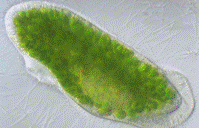Biological Sciences, School of

School of Biological Sciences: Faculty Publications
Document Type
Article
Date of this Version
1995
Citation
The Changing Prairie: North American Grasslands (A. Joern & K. H. Keeler, editors).
Abstract
Within the prairies, myriad populations of plants, insects, small mammals, and other organisms form distinct levels of organization. The physical forces of weather and fire and the complex networks of species interactions control each species’s structure and dynamics and determine its abundance or rarity. Variation in population dynamics and interactions over time and space determine the distribution and abundance of species, and ultimately the composition and dynamics of entire prairie communities.
To the casual observer, plant populations on prairies may seem quite static, like museums containing a diverse collection of specimens that can be seen again and again on repeated visits. Many plant populations, however, are much more analogous to a railway station than a museum, characterized by a constant flux of arrivals and departures. Furthermore, much of the dynamics within prairie plant populations occurs hidden belowground in the pools of seeds and rhizomes, obscuring the true population sizes and their dynamic nature. Even the dominant species that appear to be temporally and spatially stable are not static, but are characterized by significant population flux.


Comments
Copyright 1995, Oxford University Press. Used by permission.